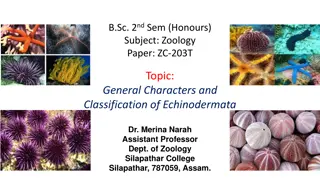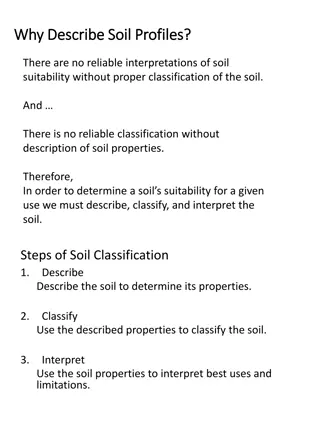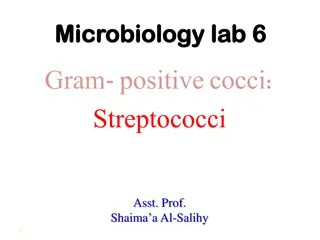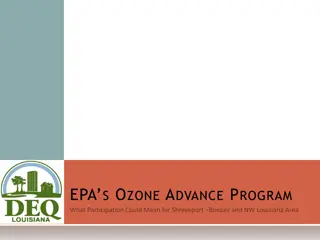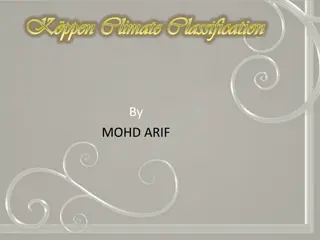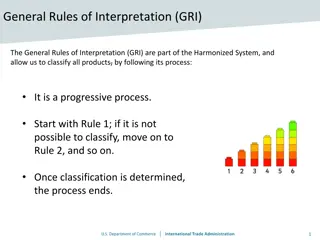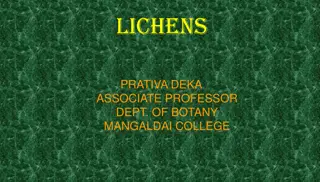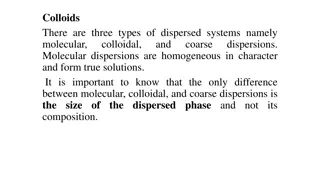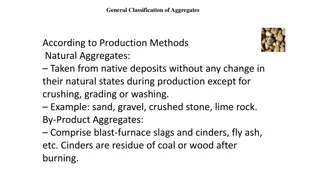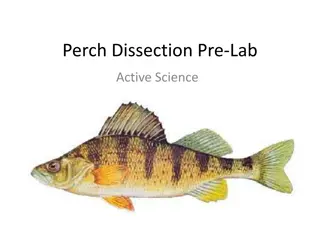Fascinating World of Oomycetes: General Characteristics and Classification
Oomycetes, specifically belonging to Diplomastigomycotina, are intriguing organisms known for their unique biflagellate zoospores. They are commonly found in water habitats and some species are parasitic, causing downy mildew diseases in plants. The group exhibits diverse reproductive strategies, including producing Oospores through gametangial contact. The classification based on swarming periods further categorizes them into Monoplanetic, Diplanetic, Polyplanetic, and Aplanetic fungi. Saprolegniales and Peronosporales are notable orders within this subdivision, each with distinct characteristics and impact on their environment.
Download Presentation

Please find below an Image/Link to download the presentation.
The content on the website is provided AS IS for your information and personal use only. It may not be sold, licensed, or shared on other websites without obtaining consent from the author. Download presentation by click this link. If you encounter any issues during the download, it is possible that the publisher has removed the file from their server.
E N D
Presentation Transcript
Sub division 2: Diplomastigomycotina Class : Oomycetes: General characteristics:- 1- They produce biflagellate zoospores, one flagellum is tinsel and the second is whiplash. 2- Most of them are living in water so they called as water mold. 3-Some of them are obligate parasites on higher plant caused downy mildew diseases. 4- Sexual reproduction is gametangial contact produce Oospore. 5- Their cell walls consist of mainly glucan, but also contain cellulose. In most species there is no chitin.
Order 1: Saprolegniales General characteristics:- 1- Some species such as Saprolegnia parasitica causes diseases of fish. 2- Mycelium is coenocytic, we can see septum only in the bases of reproductive Organs (sporangia or gametangia). There are two types of zoospores: A- Pyriform zoospores, they called also primary zoospores. B- Reniform zoospores: they called also secondary zoospores. Species that produce only one type of zoospore are monomorphic , while these which producing two types are dimorphic.
According to the swarming period, fungi are divided into: 1- Monoplanetic fungi: have only one swarming period and only one type of zoospore ex: Pythiopsis. Pyriform zoospore Swarming encystment germination new thallus 2- Diplanetic fungi: have two swarming period and two types of zoospores ex: Saprolegnia. Pyriform zoospore Swarming encystment reniform zoospore Swarming encystment germination new thallus .
3- Polyplanetic fungi: have more than two swarming period, the zoospore which is repeated is secondary zoospore ex: Dictyuchus. Pyriform zoospore Swarming encystment reniform zoospore Swarming encystment reniform zoospore encystment germination new thallus . 4- Aplanetic fungi: Those that have no swarming period and so there is no motile spores ex: Geolegnia
Family: Saprolegniaceae Ex: Saprolegnia parasitica Life cycle: Internal proliferation; sporangia continue to be formed, with several a sexual generations following one anther. One male nucleus enters each Oosphere through the fertilization tubes forms a diploid zygote nucleus. Then a thick wall develops around each Oosphere, converting it into Oospore.
Order 2: Peronosporales a group of highly specialized obligate fungi that cause: 1- Witting or Damping off diseases. 2- White rust diseases. 3- Downy mildew diseases.
General characteristics:- 1- The mycelium is branched and coenocytic, the hypha of parasitic species are intercellular or intracellular. Those of the most parasites growing between host cells and producing haustoria. 2- In some species, sporangia act as conidia and germinated into a new thallus. 3-Asexual reproduction occurs by reniform zoospores with only one swarming period. 4- Sexual reproduction occurs by gametangial contact.
This order was classified into three families according to the type of sprangiophores:- Family 1:- Pythiaceae : Sporangia on somatic hyphae or on sporangiophores of indeterminate growth, facultative, or saprobes. Family2:- Peronosporaceae:- Sporangia borne on sporangiophpres of determinate growth; obligate parasites of plants; sporangia are wind- borne. Family 3:-Albuginaceae:- Sporangia borne in chain; obligate parasites of plants.
Family 1: Pythiaceae Genus 1: Pythium: General characteristics:- 1- This fungus causes damping off seedling. 2- mycelia are coenocytic, sporangia are globose to oval 3- Production of zoospores is preceded by the formation of a bubble- like vesicle. 4- Zoospores are biflagellated- reniform. 5-This fungus does not form haustorium.
Genus 2: Phytophthra General characteristics:- 1- This fungus causes Late blight disease on Potato. 2- Mycelia are coenocytic but more branching than the mycelia in Pythium. 3- Sporangia are smaller and lemon-shaped with terminal papillae. 4- It does not form vesicle. 5- Producing haustorium.
Family 2: Peronosporacea All species are obligate parasites of vascular plants causing diseases called downy mildew. Their genera were classified according to the branching of their sporangiophores as follows: Genus 1:- Peronospora: The sporangiophores are dichotomously branched at acute angles with curved pointed tips on which sporangia are borne. This genus causes D.M. on Radish. Genus 2:- Plasmopara: The branches and their subdivision occur at right angles. This genus causes D.M. on Grape.
Genus 3:- Bremia:- Is similar to peronospora except that the tips of branches are expanded into cup-shaped apophyses with four sterigmata each bearing the sporangia. This genus causes D.M. on Lettuce. Genus 4: Basidiophora The sporangiophore is club-shaped with swallen head over which the sporangia are borne in minute sterigmata. This genus causes D.M. on Onion. Genus 5: Sclerospora The sporangiophore is a long hypha, with many upright branches near the end, bearing sporangia at the tips. This genus causes D.M. on Mongra.
Family 3:Albuginaceae This family includes the fungi known as white rusts. Genus: Albugo:- There are several species of Albugo, the only one genus in this family. The more important species is A. candida which attack Crucifers. Life cycle of Albugo candida The mycelium is intercellular and feeds by means of haustoria . The maturity mycelium produces short, club-shaped sporangiophores from the tips of a large number of hyphal branches below the epidermis of the host.





